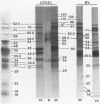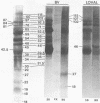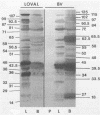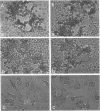Abstract
The immunological relatedness of the structural proteins of the budded and occluded phenotypes of Autographa californica nuclear polyhedrosis virus was examined by reciprocal immunoblotting and by in situ peroxidase-antiperoxidase staining of virus-induced cell surface and intracellular antigens with antisera to both phenotypes. The molecular weights (MWs) of major structural proteins of both phenotypes that reciprocally cross-reacted were 92,500, 78,000, 62,500, 54,000, and 42,000. A highly immunogenic, major structural protein of the occluded phenotype of 46,000 MW was not recognized by antiserum to the budded phenotype, and a major structural protein of the budded phenotype, 48,000 MW, was not recognized by antiserum to the occluded phenotype. Both the budded and occluded phenotypes contained a protein of 33,500 MW that comigrated with polyhedrin (the matrix protein) and reacted with antiserum and monoclonal antibody to polyhedrin. Evidence was obtained for the apparent antigenic relatedness of proteins of different MWs from the budded and occluded phenotypes, possibly indicative of different processing of some proteins for the two phenotypes. Antiserum to the occluded phenotype recognized virus-induced cell surface antigens, indicating antigenic similarities between the occluded phenotype and envelope proteins of the budded phenotype. Antiserum to the budded phenotype recognized viral proteins produced before the appearance of cytopathic effect, whereas antiserum to the occluded phenotype did not.
Full text
PDF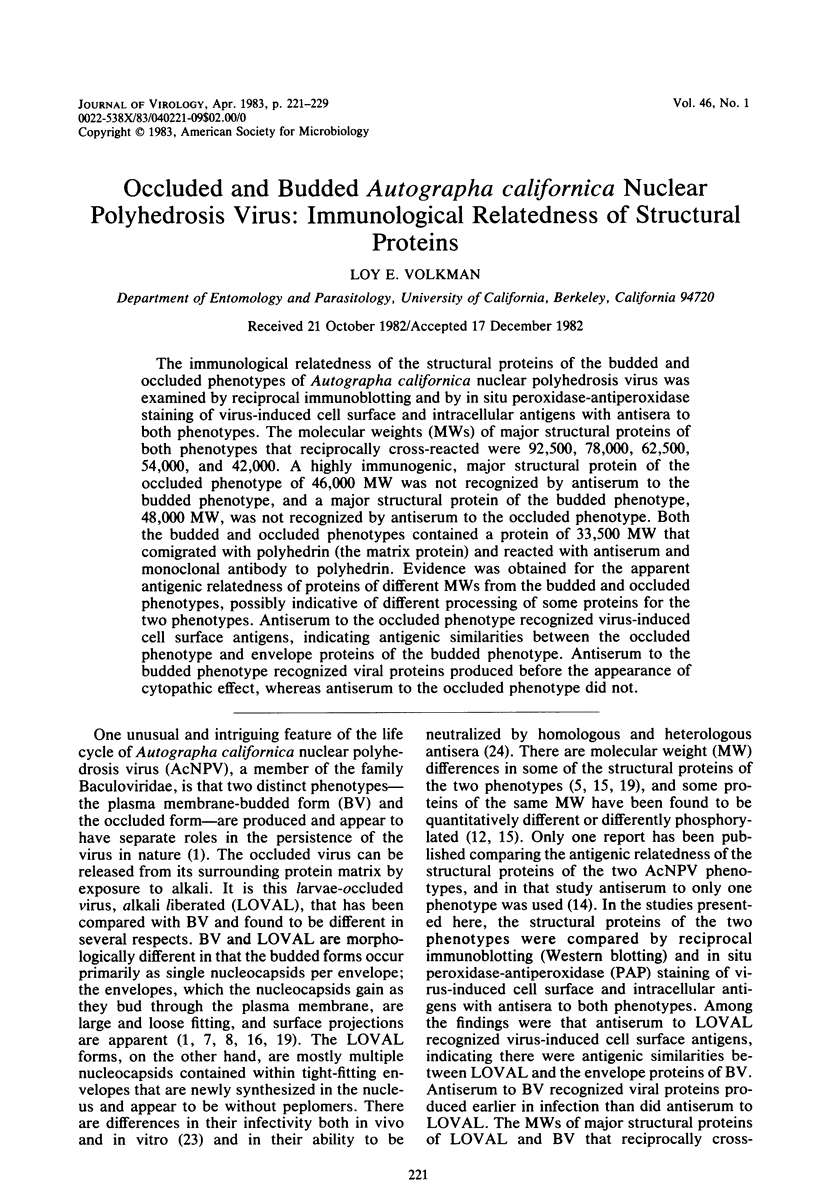
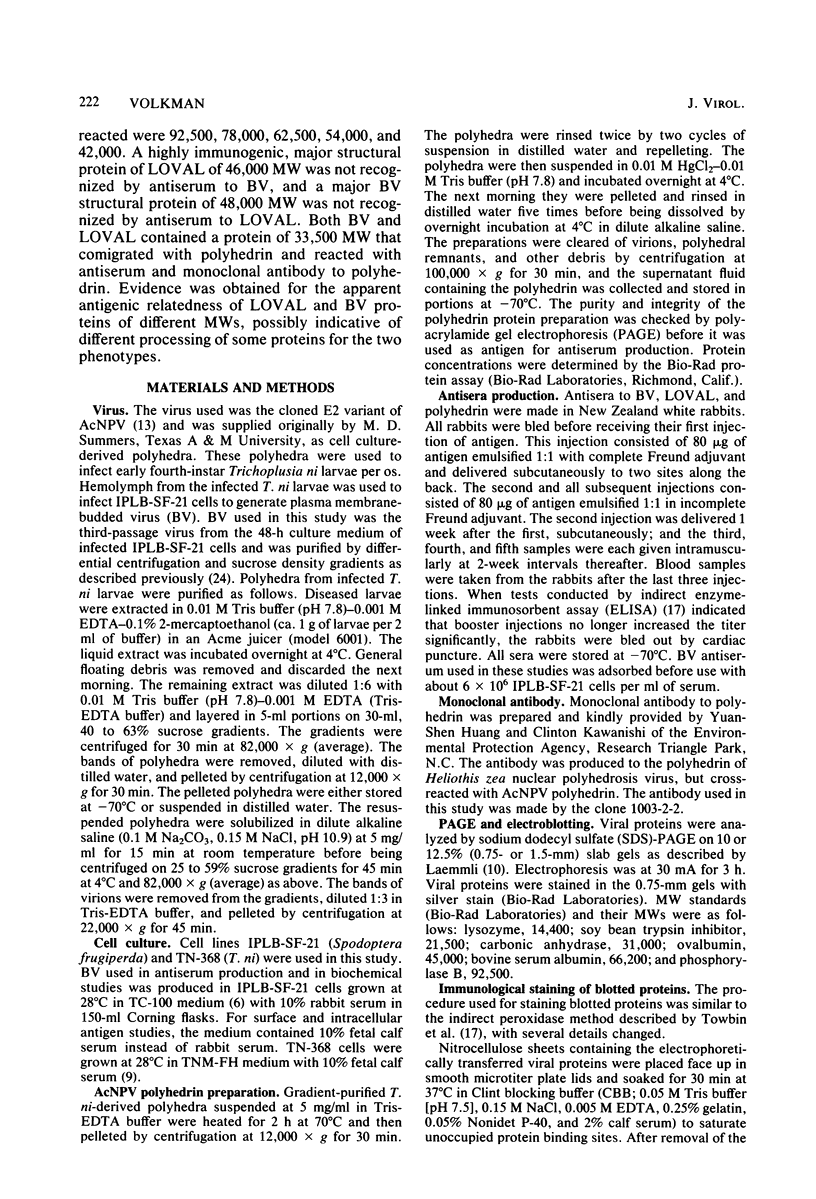
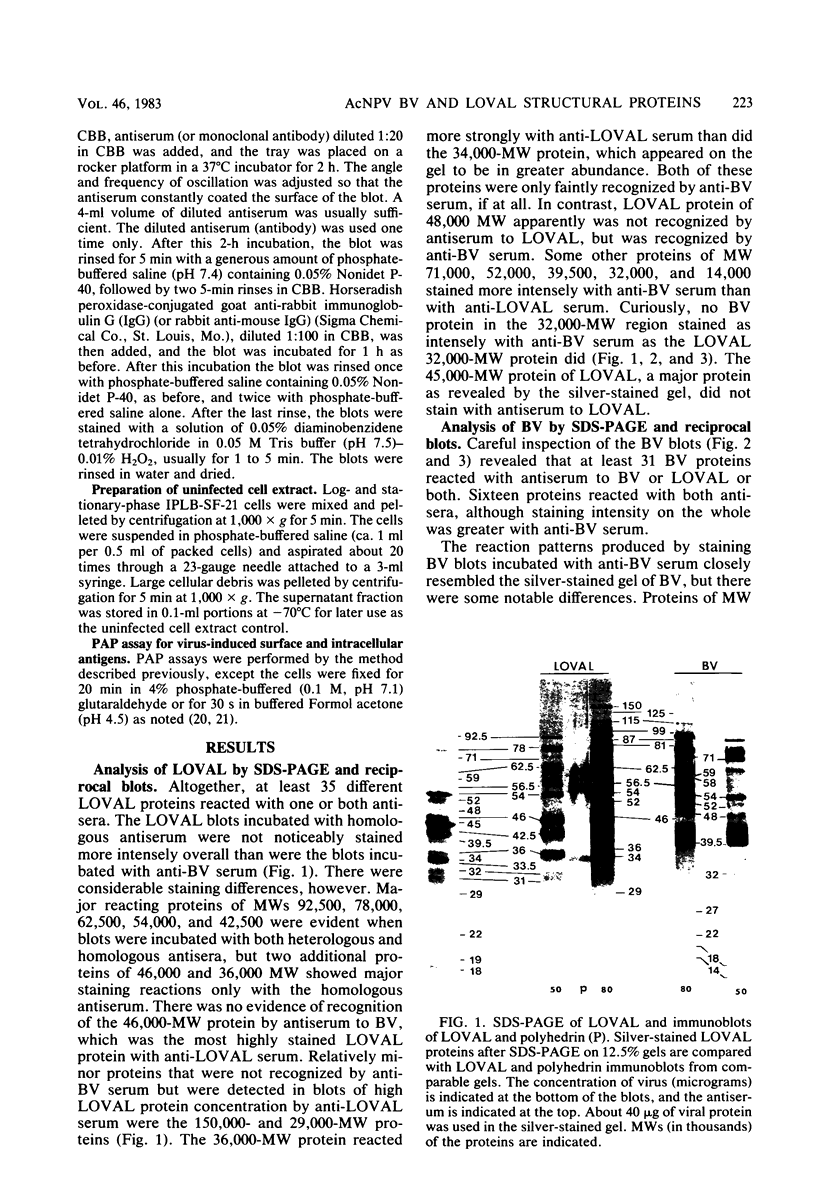
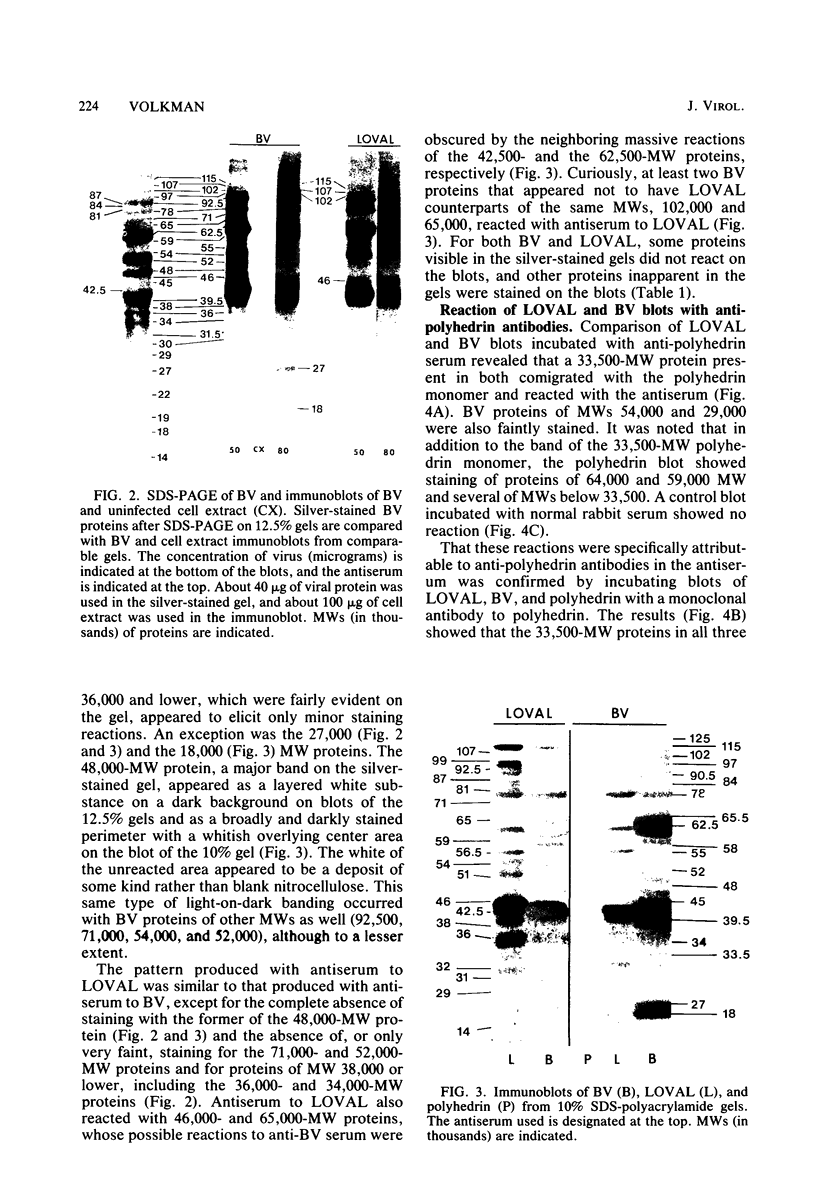
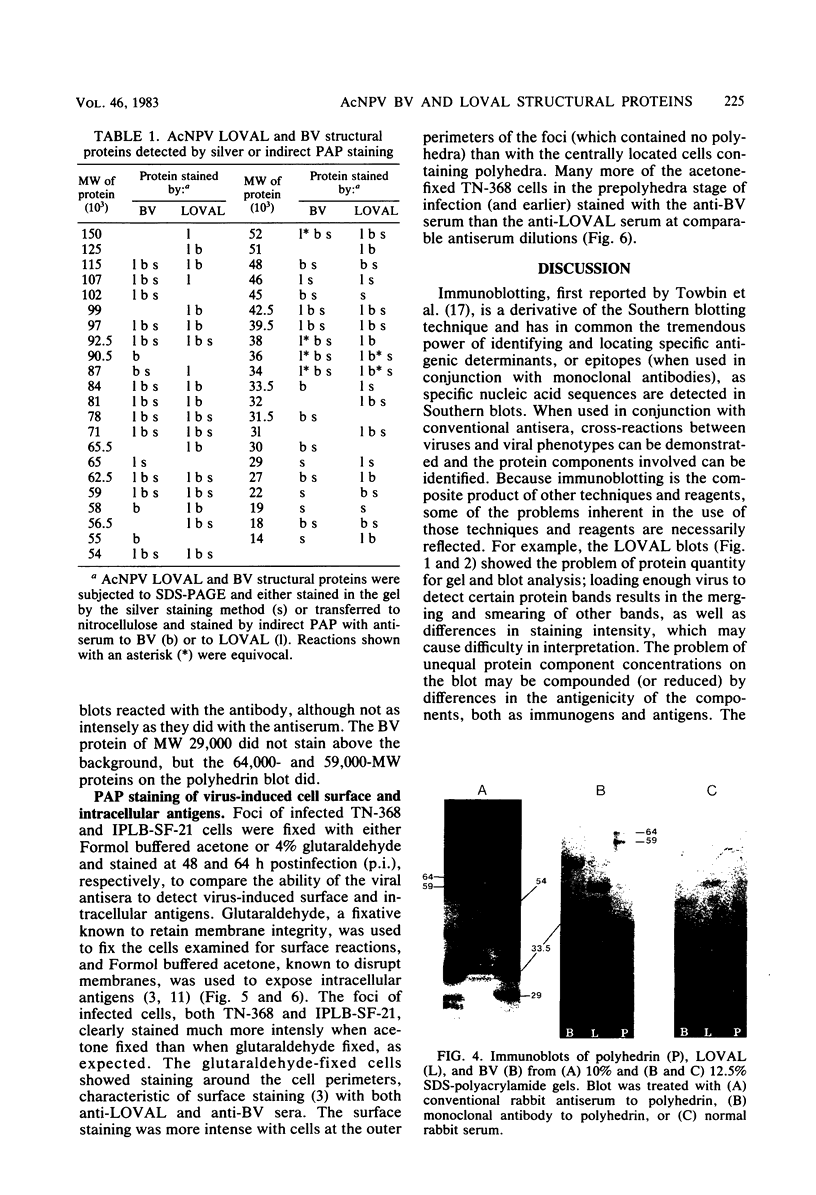
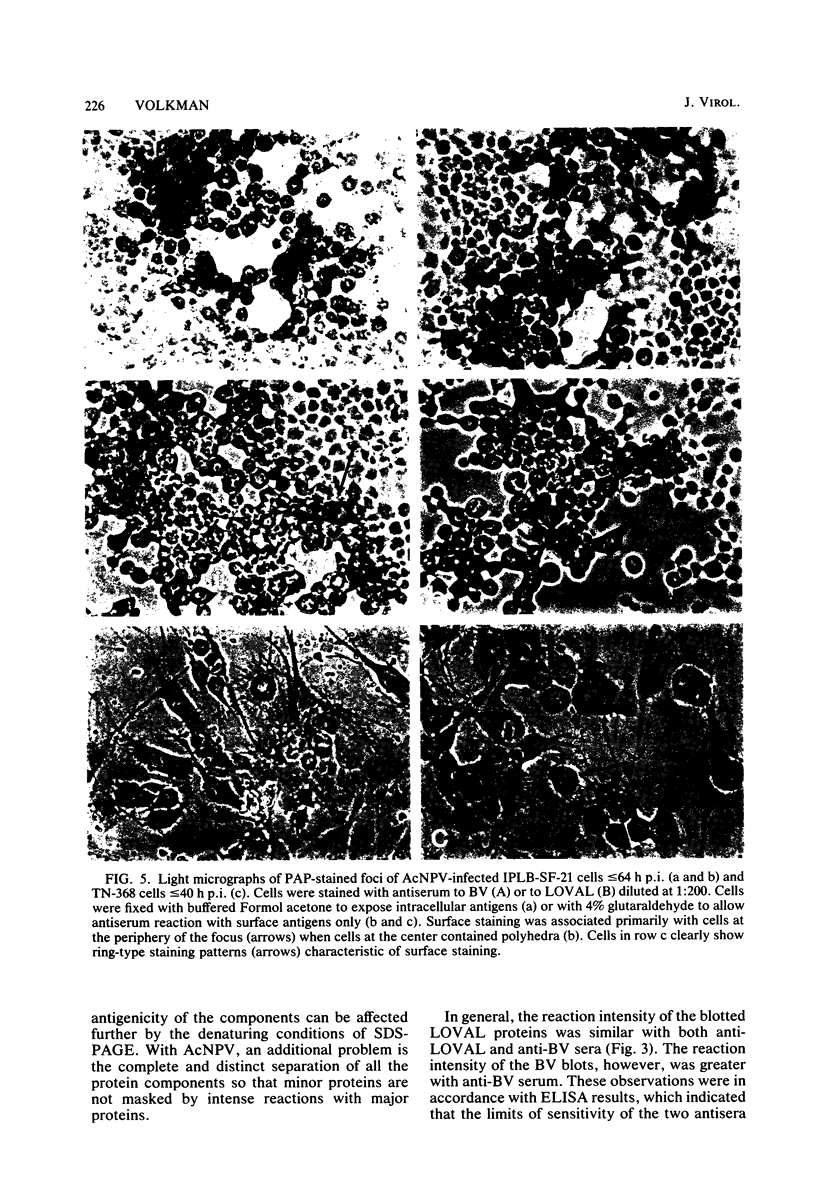
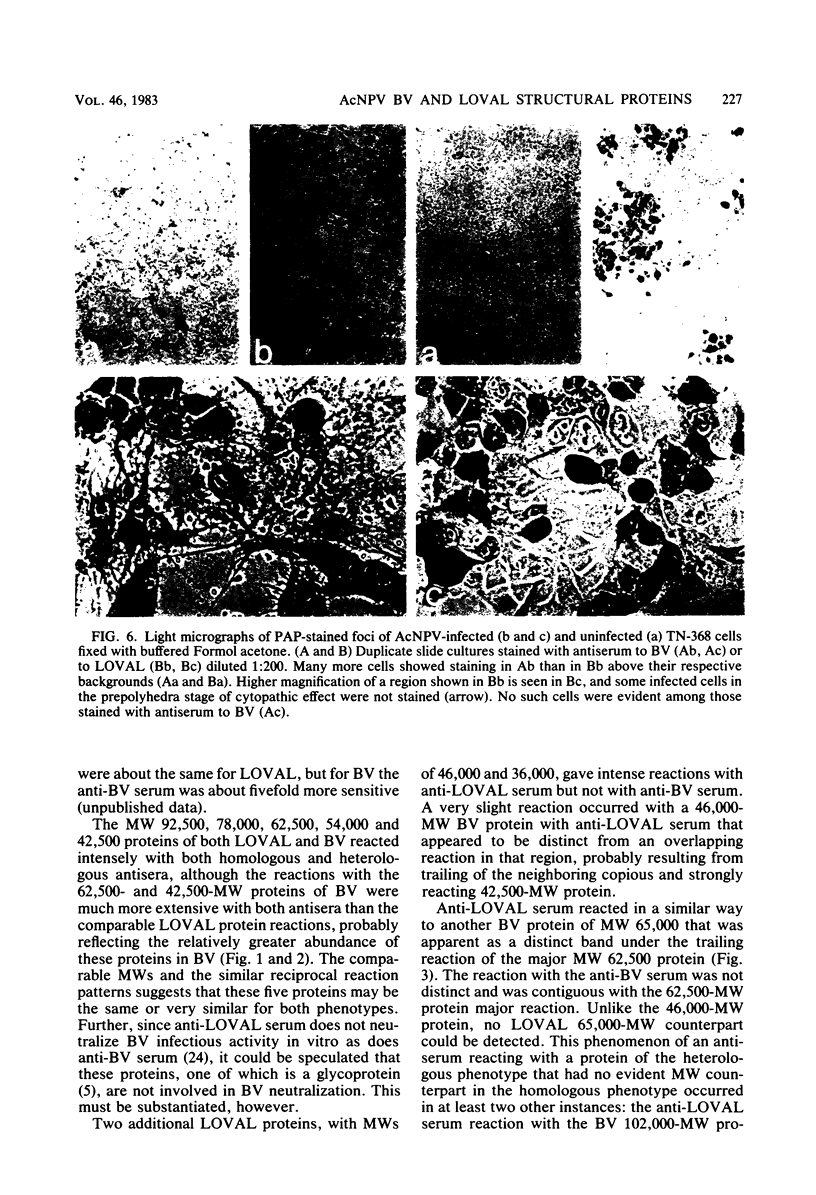
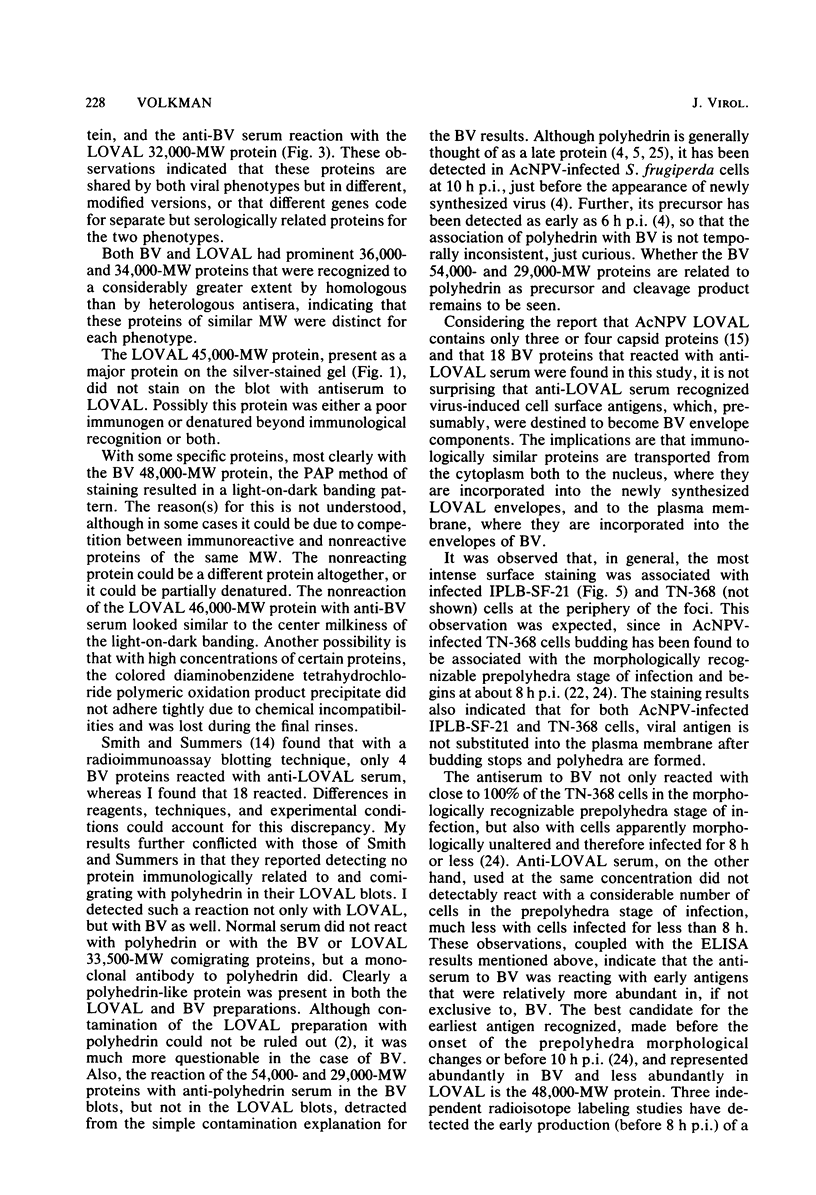
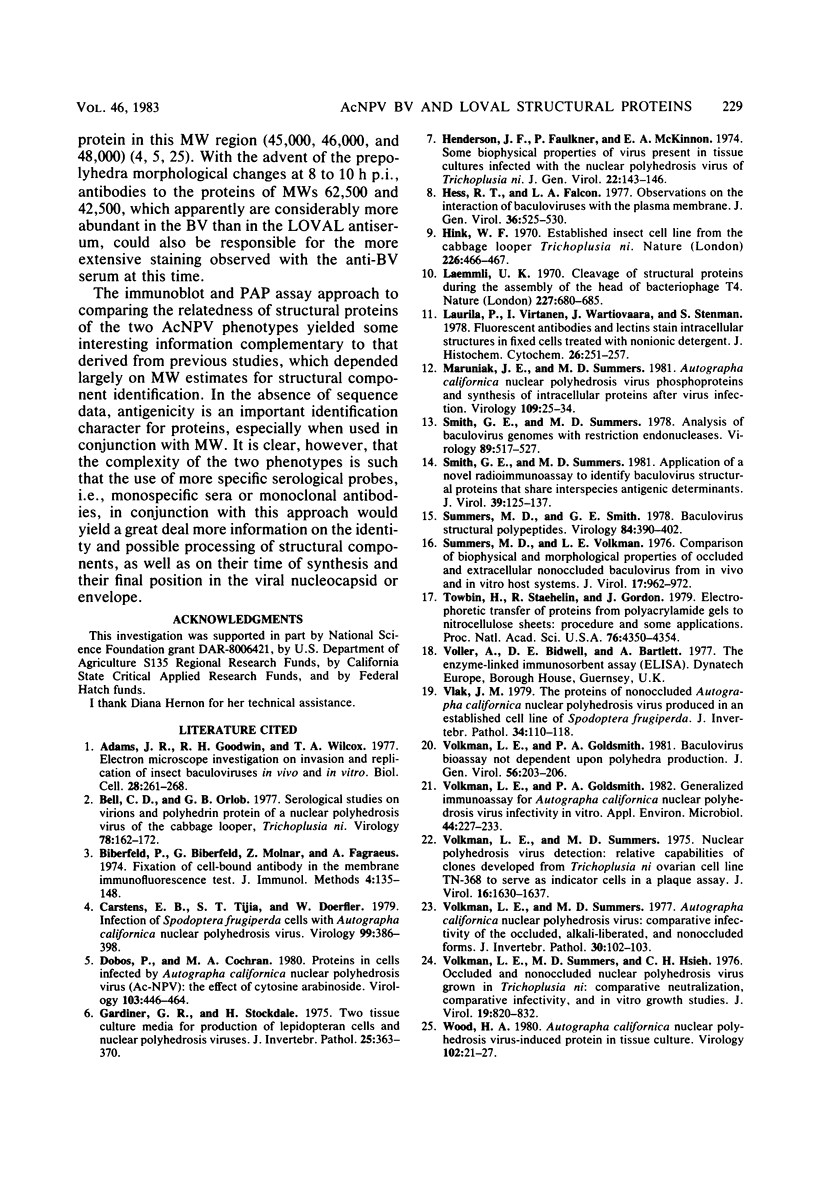
Images in this article
Selected References
These references are in PubMed. This may not be the complete list of references from this article.
- Bell C. D., Orlob G. B. Serological studies on virions and polyhedron protein of a nuclear polyhedrosis virus of the cabbage looper, Trichoplusia ni. Virology. 1977 May 1;78(1):162–172. doi: 10.1016/0042-6822(77)90088-5. [DOI] [PubMed] [Google Scholar]
- Biberfeld P., Biberfeld G., Molnar Z., Fagraeus A. Fixation of cell-bound antibody in the membrane immunofluorescence test. J Immunol Methods. 1974 Mar;4(2):135–148. doi: 10.1016/0022-1759(74)90056-8. [DOI] [PubMed] [Google Scholar]
- Carstens E. B., Tjia S. T., Doerfler W. Infection of Spodoptera frugiperda cells with Autographa californica nuclear polyhedrosis virus I. Synthesis of intracellular proteins after virus infection. Virology. 1979 Dec;99(2):386–398. doi: 10.1016/0042-6822(79)90017-5. [DOI] [PubMed] [Google Scholar]
- Henderson J. F., Faulkner P., MacKinnon E. A. Some biophysical properties of virus present in tissue cultures infected with the nuclear polyhedrosis virus of Trichoplusia ni. J Gen Virol. 1974 Jan;22(1):143–146. doi: 10.1099/0022-1317-22-1-143. [DOI] [PubMed] [Google Scholar]
- Hink W. F. Established insect cell line from the cabbage looper, Trichoplusia ni. Nature. 1970 May 2;226(5244):466–467. doi: 10.1038/226466b0. [DOI] [PubMed] [Google Scholar]
- Laemmli U. K. Cleavage of structural proteins during the assembly of the head of bacteriophage T4. Nature. 1970 Aug 15;227(5259):680–685. doi: 10.1038/227680a0. [DOI] [PubMed] [Google Scholar]
- Laurila P., Virtanen I., Wartiovaara J., Stenman S. Fluorescent antibodies and lectins stain intracellular structures in fixed cells treated with nonionic detergent. J Histochem Cytochem. 1978 Apr;26(4):251–257. doi: 10.1177/26.4.207770. [DOI] [PubMed] [Google Scholar]
- Smith G. E., Summers M. D. Application of a novel radioimmunoassay to identify baculovirus structural proteins that share interspecies antigenic determinants. J Virol. 1981 Jul;39(1):125–137. doi: 10.1128/jvi.39.1.125-137.1981. [DOI] [PMC free article] [PubMed] [Google Scholar]
- Summers M. D., Smith G. E. Baculovirus structural polypeptides. Virology. 1978 Feb;84(2):390–402. doi: 10.1016/0042-6822(78)90257-x. [DOI] [PubMed] [Google Scholar]
- Summers M. D., Volkman L. E. Comparison of biophysical and morphological properties of occluded and extracellular nonoccluded baculovirus from in vivo and in vitro host systems. J Virol. 1976 Mar;17(3):962–972. doi: 10.1128/jvi.17.3.962-972.1976. [DOI] [PMC free article] [PubMed] [Google Scholar]
- Towbin H., Staehelin T., Gordon J. Electrophoretic transfer of proteins from polyacrylamide gels to nitrocellulose sheets: procedure and some applications. Proc Natl Acad Sci U S A. 1979 Sep;76(9):4350–4354. doi: 10.1073/pnas.76.9.4350. [DOI] [PMC free article] [PubMed] [Google Scholar]
- Volkman L. E., Goldsmith P. A. Baculovirus bioassay not dependent upon polyhedra production. J Gen Virol. 1981 Sep;56(Pt 1):203–206. doi: 10.1099/0022-1317-56-1-203. [DOI] [PubMed] [Google Scholar]
- Volkman L. E., Goldsmith P. A. Generalized Immunoassay for Autographa californica Nuclear Polyhedrosis Virus Infectivity In Vitro. Appl Environ Microbiol. 1982 Jul;44(1):227–233. doi: 10.1128/aem.44.1.227-233.1982. [DOI] [PMC free article] [PubMed] [Google Scholar]
- Volkman L. E., Summers M. D. Autographa californica nuclear polyhedrosis virus: comparative infectivity of the occluded, alkali-liberated, and nonoccluded forms. J Invertebr Pathol. 1977 Jul;30(1):102–103. doi: 10.1016/0022-2011(77)90045-3. [DOI] [PubMed] [Google Scholar]
- Volkman L. E., Summers M. D., Hsieh C. H. Occluded and nonoccluded nuclear polyhedrosis virus grown in Trichoplusia ni: comparative neutralization comparative infectivity, and in vitro growth studies. J Virol. 1976 Sep;19(3):820–832. doi: 10.1128/jvi.19.3.820-832.1976. [DOI] [PMC free article] [PubMed] [Google Scholar]
- Volkman L. E., Summers M. D. Nuclear polyhedrosis virus detection: relative capabilities of clones developed from Trichoplusia ni ovarian cell line TN-368 to serve as indicator cells in a plaque assay. J Virol. 1975 Dec;16(6):1630–1637. doi: 10.1128/jvi.16.6.1630-1637.1975. [DOI] [PMC free article] [PubMed] [Google Scholar]



